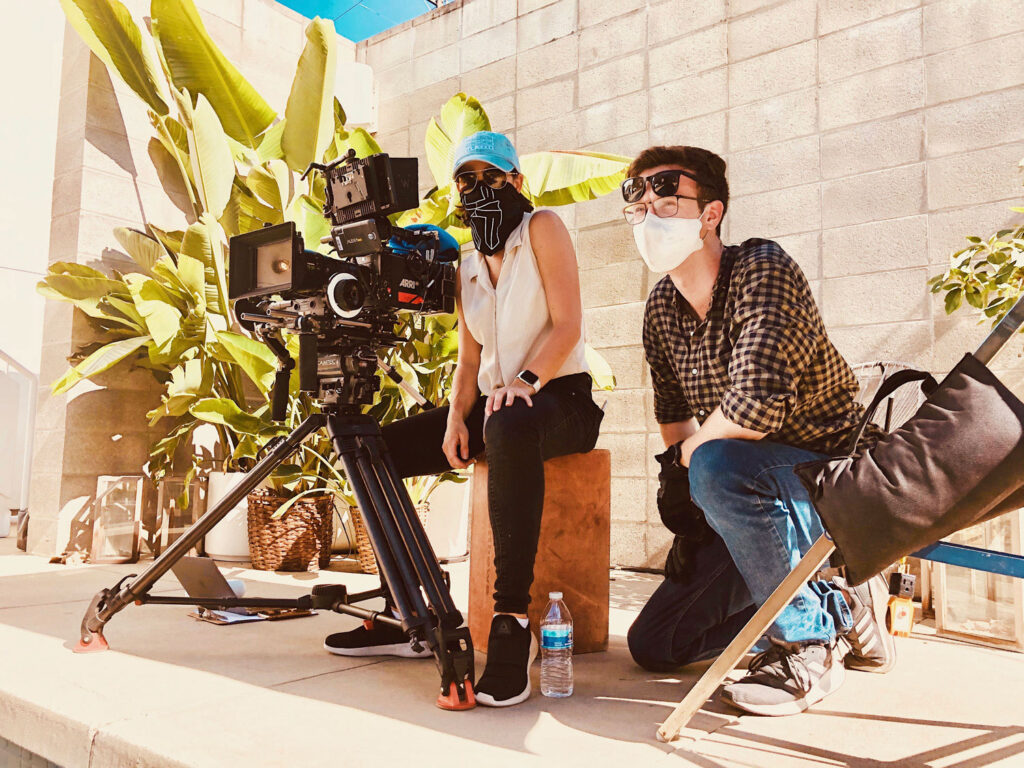
Commercial cinematographer Fiorella Occhipinti brings bold visual stylings to fashion and beauty sets, using FUJINON Cabrio ZK19-90mmT2.9. She reveals the why behind her choice of kit
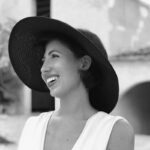
Fiorella Occhipinti graduated from ArtCenter College of Design in 2011 with a major in cinematography. Entering into the professional world, she quickly began camera assisting, and working at a rental house between shoots. After expanding her on-set skills to include camera operating, the creative balanced all three roles for a number of years, as she built a reel. With time, skill, and dedication, Fiorella became a fully fledged cinematographer. Today, she enjoys a career in the commercial sphere, working with a wealth of high-end fashion and beauty brands.
How did your filmmaking career begin?
In film school, I loved period pieces. I thought I was going to be doing all these scripted, cinematic films, but somehow I landed a documentary. Then that little documentary led into a few bigger projects. All of a sudden, I found myself shooting documentary films for about three years. I thought it was awesome. I was traveling, having incredible experiences, capturing these amazing stories, and I loved being a part of all these projects. I had no idea I was laying down the foundations for my fashion and beauty career, but I loved that part of my life.
Around 2018, based on my documentary style, a production company asked me if I was available to film behind the scenes for a fashion shoot. I didn’t even know what a fashion shoot was about at this time. All I knew professionally was my documentary instincts, but I did a behind-the-scenes shoot and loved it. It was so creative and freeing, finding cool angles and nice compositions, and using the available light. I’m happy that I naturally went the documentary route because it makes you so quick on your toes. A lot of times, though, the goal is to capture the story. That will always triumph.
I had the time of my life. It was so much fun. And from there, I wanted to explore the fashion scene more. That one little behind-the-scenes project turned into another one, then the next shoot wasn’t behind the scenes at all. Little by little, it kicked off my fashion and beauty career, with everything stemming back to my documentary roots. I believe there are a lot of similarities, but it’s not so much about how you tell the story as it is about feeling. Lifestyle work gives the viewer a sense of what it’s like to use the brand, wear the clothes, and own that vibe. I love that aspect of it – challenging, but creative as well.
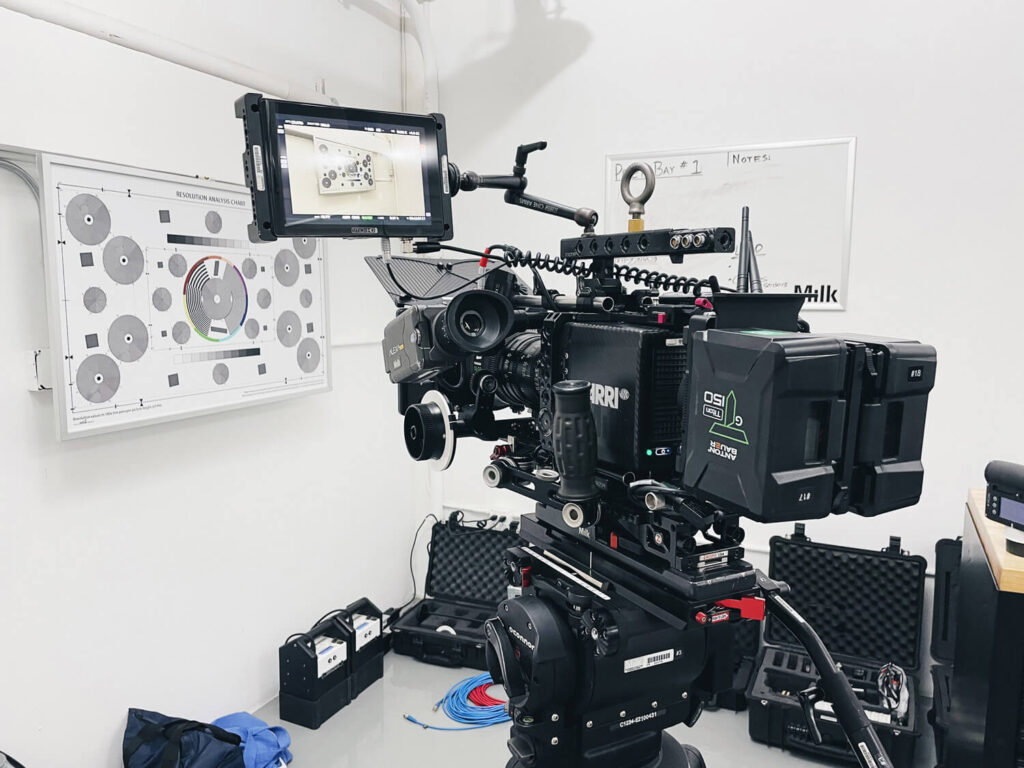
What’s in your kit bag?
I don’t have a literal kit bag because every project for me is new. I take it for what it is and almost start from scratch. I ask myself what the project needs, rather than make one single kit fit with it. I like to make sure I’m bringing the intention each project deserves.
I would say, if I did have a kit bag, the FUJINON Cabrio ZK19-90mmT2.9 would definitely be part of it. I use it on almost all my jobs. It’s even become a joke in the rental house – if they ever forget to put it on the prep floor, they’ll say ‘how could we have overlooked Fio’s lens?’ because it’s such an extension of my arm.
Among the Fujinon range, I also love the Premista 28-100mmT2.9 for a whole other set of reasons, but the Cabrio is with me all the time.
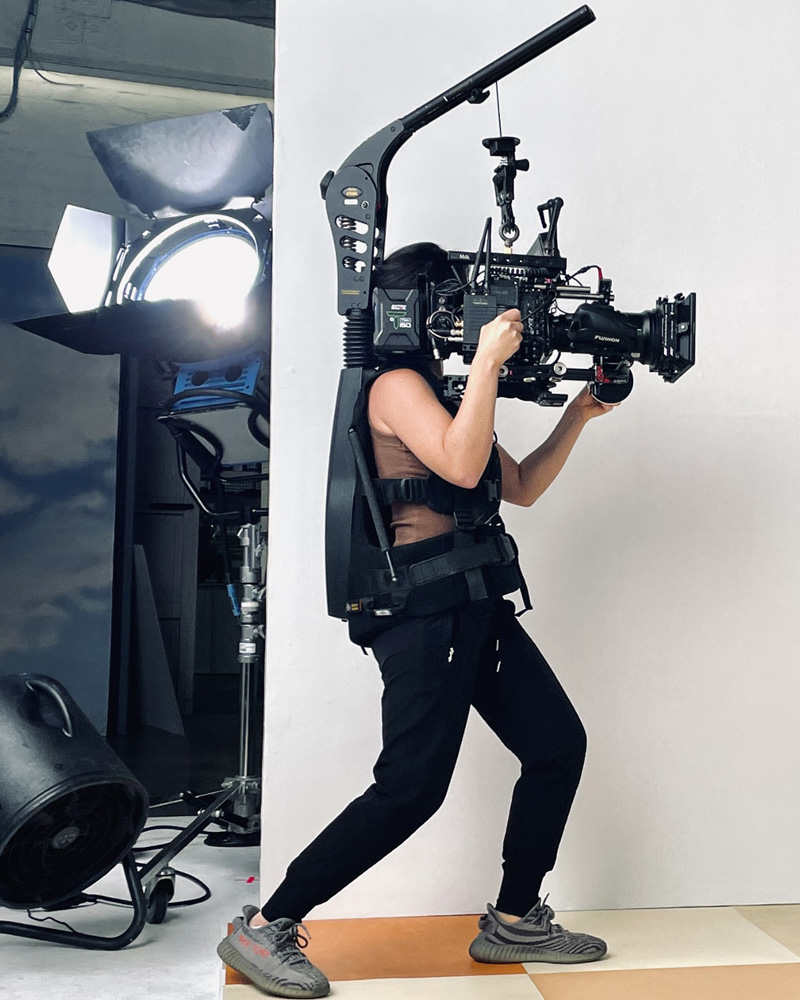
Do you remember your first experience with Fujinon cine lenses?
I don’t remember my first experience because I’m sure I used a bunch of Fujinon zooms throughout film school. I probably should have paid more attention. When I was shooting documentaries, I had a mostly practical mindset. It wasn’t until I got into the core of what my career is now that I started paying more attention to why I’m choosing one zoom over another. Now, I deeply question what the differences are, doing camera tests to make sure I know what I’m getting from them, then once I’m using the same lens over and over, I consider what exactly is drawing me back.
The experience that first made me fall in love with the Cabrios was during the pandemic. When film shoots started opening up, crews could only be so big. I was heading into this very small shoot – just me, no camera assistant – and emailed my vendor here in LA asking for a lens recommendation. I needed a range of around 20-100mm and explained that I wanted something compact and light enough to sit in my rig comfortably, as I operated, zoomed, and pulled focus. Because it was me operating, I also knew it had to have an ENG-style zoom. I was essentially a one-woman band, so needed a lens that would do everything, and allow me to be self-sufficient.
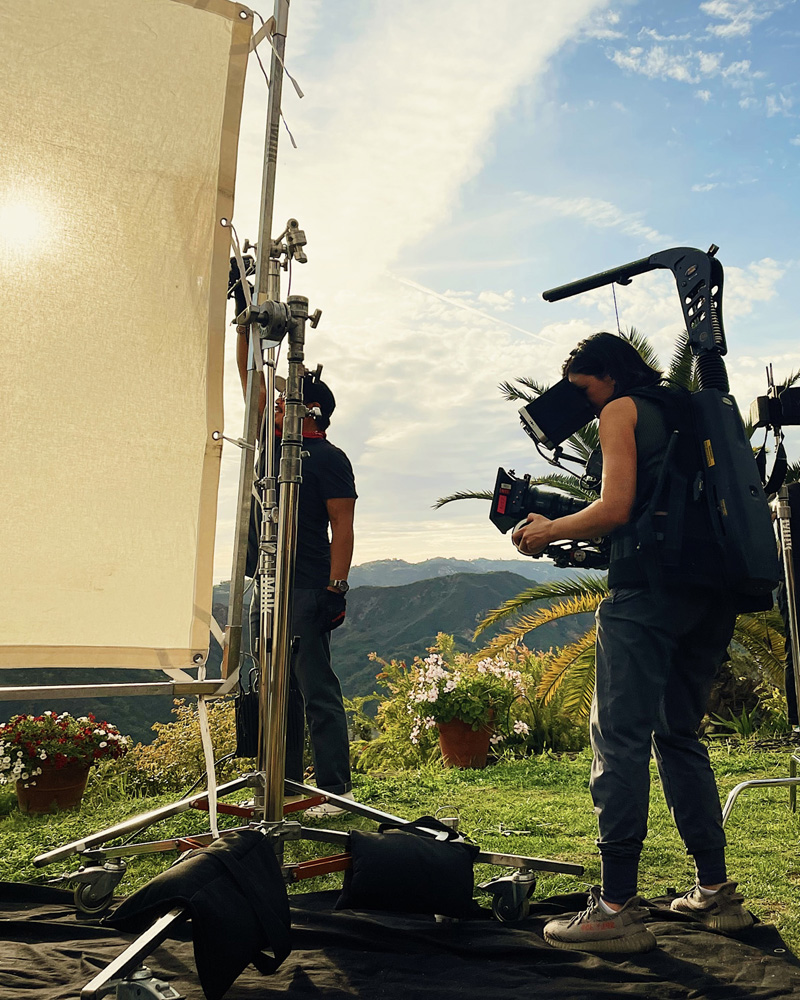
That’s when they recommended the Cabrio ZK19-90mmT2.9. I went to see it in person and was impressed to find how light and compact it was – especially for the coverage. I knew I wouldn’t be switching out lenses, and this gave me everything from wide angle to telephoto. Using the zoom was great because it has the servo attached and I could dial in my preferred speed. Sometimes I need a snap zoom, sometimes I need something slower and more dramatic.
What does the Cabrio ZK19-90mmT2.9 deliver visually?
There’s always the aesthetics of an image to consider. People will never know what went into getting a shot, but they will see the visual quality. I always like to tread a line of sharpness with a little edge of softness. There has to be a perfect middle ground for me. I don’t like when things are soft and so vintage-looking that there’s no definition, but I also can’t have an extreme sense of digital sharpness. When you’re shooting beauty, fashion, and models in close-ups, you don’t want to see every single pore. When you talk to cinematographers, we all have a different opinion on sharpness, but at least in my work, the Cabrios sit right in the sweet spot.
How do the practical demands of a shoot balance against personal workflow preferences?
There’s always a little bit of both. It also depends on the project. I wouldn’t shoot using a lens that doesn’t provide elements I personally value because my body of work is a representation of myself, but the needs of the project are everything.
I’m always thinking of practicality. Sometimes zoom is a fun visual element, so that might be one of the reasons I ask for it, but it might also be due to schedule. A lot of times when I’m working with talent, we’ve got a small amount of time to shoot. You don’t have many takes with them, so a zoom is the best option because we don’t have to change lenses. Zooms also give me the flexibility to find the frame within a nanosecond. If I see it’s too wide, I can quickly zoom in for the frame I wanted. The Cabrio ZK19-90mmT2.9 especially is freeing in that sense. During a lifestyle shoot, on location, it’s very much about being inspired by your environment, the architecture or nature, and the natural sunlight. A wide zoom range lets me be creative and get the shot that best suits the moment.
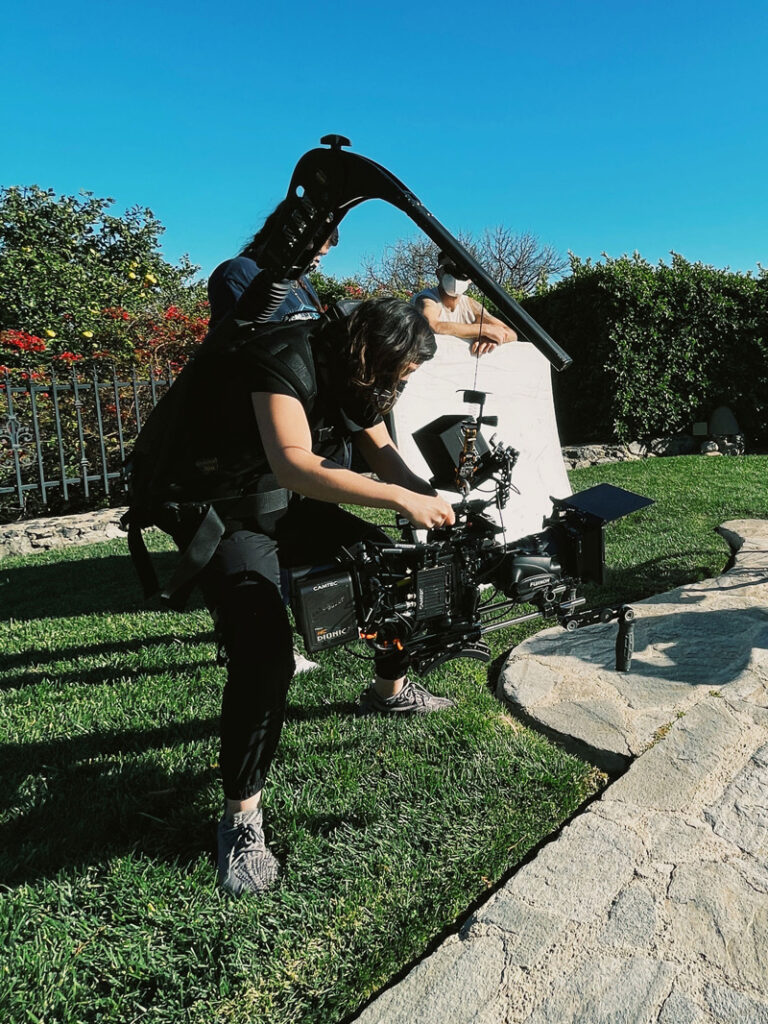
Camera and lens pairing is always an important consideration. I’ve been using the ARRI Alexa Mini for several years now and find it to be an organic companion for the Cabrios. The optics give me what I want, the sensor gives me what I want, so they go together hand in hand. Ultimately, they’re working together to provide what I need and extend my potential.
Among many shoots with the Cabrios, have you had any standout moments?
One project definitely comes to mind, and it was a campaign for Bandier. I was operating, and unlike my first shoot with the Cabrio, I did have a camera assistant pulling focus. That’s always more freeing. It’s almost endless what you can do with the shot, and I was so inspired in the moment. Music was playing, the talent was moving all around, and I love getting to be responsive to what’s on camera. It goes back to the documentary roots, where you have to predict what a subject is doing. Sometimes our model was up high and I’d want to go low, almost like a dance choreography – but really, that job felt infinite with what I could do because of that 19-90mm range. With a prime, if you don’t have time to switch lenses, you’re forced to make the shot work using that one perspective, even if it’s not the best choice. With a zoom, I decide what’s best, with no compromise.
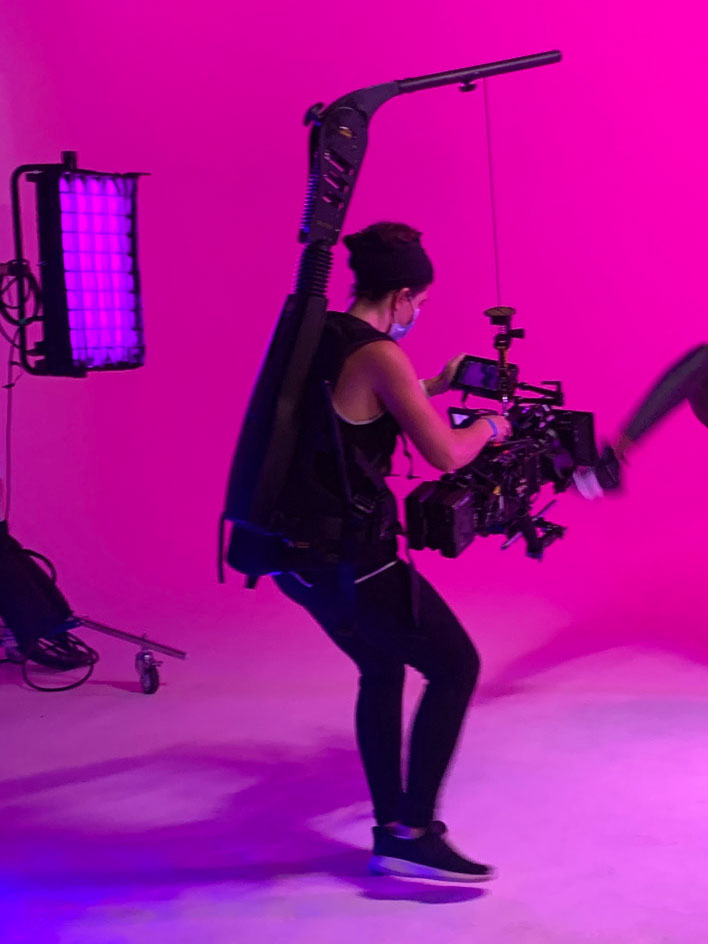
I was having so much fun operating, playing around, trying to find the best possible shots and frames for the project. That particular job sealed the idea for me that it’s so nice to have a tool that lets you express yourself so well, so quickly. It feels like the 19-90mm specifically is an extension of myself, and my creative vision. When I know what I want in the shot, there’s no waiting to get the angle or frame.
There are countless experiences, whether with the ZK19-90mmT2.9 or other Cabrio lenses – and Premistas – where I’ve felt good knowing I’ve made the right decision for the job. Focusing on those positive experiences makes the decision-making process even more instinctual next time around.
FEATURED PRODUCT
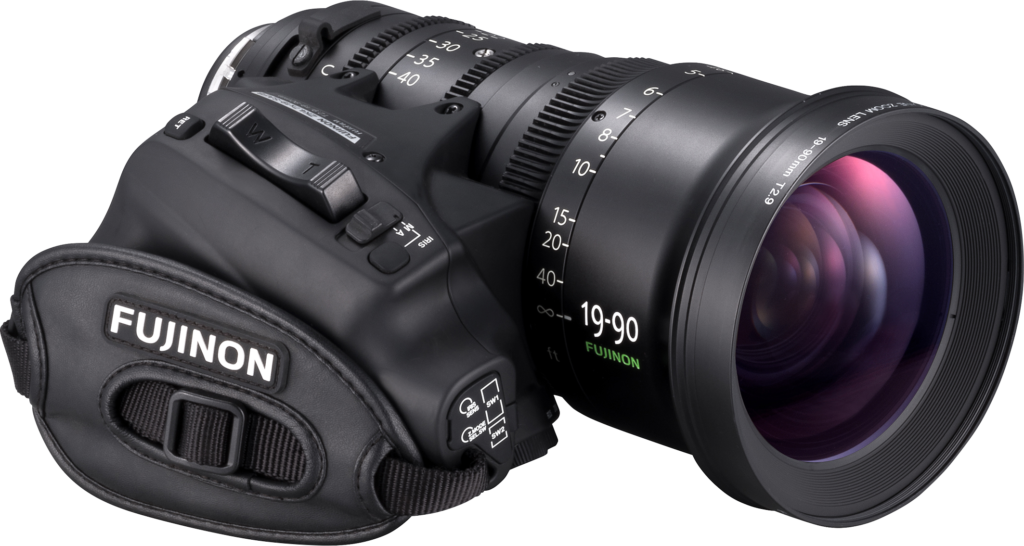
Cabrio19-90mm
Cabrio lightweight cinema zoom lenses offer consistent optical performance.

